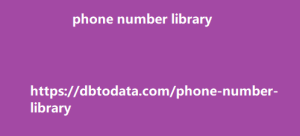How to Identify Featured Snippet Opportunities This step-by-step guide can help you potentially win a featured snippet: Check if keywords have featured snippets. Look into keyword suggestions. Optimize content for the featured snippet type. Know your audience’s intent. Make your content concise and informative. Use schema markups. Keep track of featured snippet targets. Let’s get into each one. Check if keywords have featured snippets You can see this in SEMRush. keywords, you might see symbols like these, which indicate that the search queries show both organic results and structured results, such as featured snippets, PAAs, and more. How to check if keywords have featured snippets using SEMRush You should also check the SERPs manually to see what kind of featured snippet is showing up for this keyword.
Manually checking if the Google search for
“how to tell if seo is working” has a featured snippet From this, we know this particular keyword has a list featured snippet. This means that if I added a list to my old article, I can try to steal this featured snippet from the currently ranking website. Look into keyword suggestions From there, go into Keyword Overview, which shows you related keywords and queries of your selected keyword. In the example below, I’m checking the keyword “how to tell seo is working,” which I used in a previous article. Keyword suggestions and questions from SEMRush for the keyword “how to tell seo is working” This data shows what other keywords you might want to include in your article or page, as well as opportunities to hit the PAA section.
Optimize content for the featured snippet type
Once you know what type of featured snippet your targeted keyword has, it’s time to optimize your content for it. Make sure you’re adding something that fits the criteria. I also have other tips in another article I previously wrote on optimizing for featured snippets, if you need more help on that. In the previous example, I said I’d add a list for my article targeting the keyword “how to tell seo is working” because that is the type of snippet I saw in the SERPs. If, on the other hand, I saw that it was showing a paragraph-type snippet, then my strategy for this article would change.
Pro-tip: whatever you saw in the current featured
snippet you’re trying to claim, one-up it. If it’s listing, say, the seven benefits of something, list eight to ten. If it’s a concise description of a topic, try doing the same—but with a little extra valuable info (if you have some expertise in the area, this is where it would come in handy). Always try to beat the value of the current featured snippet with the content you’re optimizing. Know your audience’s intent Part of optimizing your content is understanding your audience. When people search certain keywords, they are looking for a specific answer—they may not know what that is, yet, but you should. You have to know what kind of answer they’re looking for.
Knowing that will help you understand how to
best answer their query. I dive deep cameroon phone number library into this topic in my other guide on how to make helpful content. Crafting the right response makes it more likely for your content to become a featured snippet. Make your content concise and informative. Aside from using the right type of content, you have to make sure your answers are succinct and relevant to the query. Make your answers as to the point as possible (think 2-3 sentences, max). Why? Google regularly pushes for short yet informative answers in the featured snippet. So, we know this is the way to go. Another pro tip: add a quick summary section to your articles.
You might have seen this in other websites
I’ve also started doing it while I refresh some older content of mine, like this section I added to this article, and some of my older but high-performing work, like my guide to aggregate rating schema. the tl;dr section that was made for the article on how to add aggregate rating schema Adding a “too long, didn’t read” (tl;dr) to your most popular pages is an easy way of gaining a few featured snippets here and there. Making small additions to deliver your content in a simpler way can actually do a lot for your SEO. Plus, it’s a really easy way to experiment with your content.
Use schema markups Schema markups are lines
of code that feed search book a consultation with the marketing league now engines (like Google) data in a structured manner. This helps Google better understand your content and its context, which results in improved snippets, also known as rich snippets. Applying the right schema markup when applicable can help you win that featured snippet. Some common ones include: FAQ schema How-to schema Recipe schema Product schema There are two ways to add schema markups to your website. The first is through plugins, the second is through hard coding. I recommend looking into the different markups you can add to your content on the Schema website. Keep track of featured snippet targets Lastly, always keep track of your progress.
Like I said earlier, you won’t know what’s working out
for your SEO and what isn’t if you don’t have hit post a baseline to compare it to. And the same goes for your ongoing progress—so monitor those featured snippet targets. From there, you can continue applying what works well for your website to other pages, and get rid of the strategies that don’t. Key Takeaway As featured snippets continue to dominate the top of the SERPS, knowing how to identify featured snippet opportunities—and how to capture them—can help you increase visibility for your website. Our Best Kept SEO Secrets! SEO School Growth Hacks Get the Top 10 Inbound Marketing News Every Month Name: Email: Submit Form SEO Tools Cognitive An In-Depth Guide to Keyword Search Volume and How to Use it for Your SEO An In-Depth Guide to Keyword Search Volume and How to Use it for Your SEO Table of Contents Show As you dive into the fast-paced world of SEO (search engine optimization), it’s important to understand the key search results.

